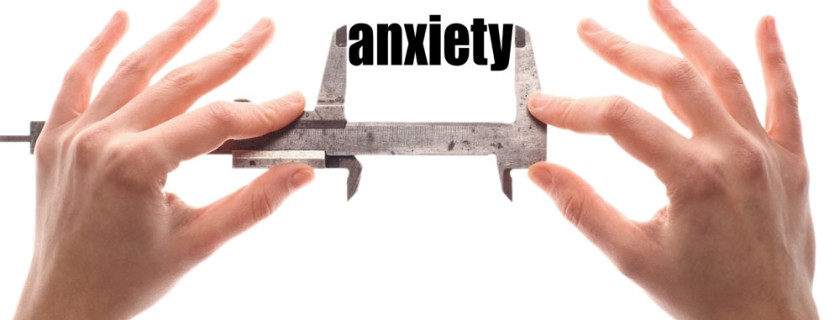Have you ever seen a loved one suffering from anxiety and wondered how serious the problem is? Or perhaps you’re feeling suddenly more prone to anxiety than you have ever before. While some bit of anxiety is natural every now and then, it can become a source of worry if the anxiety levels exceed acceptable limits. Now what are those acceptable limits? How much anxiety is too much? And when does anxiety become a problem or a condition, necessitating treatment or even medical intervention?
There’s actually a system to measure the anxiety levels of a person through a simple 21-question process. This multiple-choice self-report inventory, called the Beck Anxiety Inventory (BAI), is named after its creator Dr. Aaron T. Beck. The inventory measures severity of anxiety in a person on a scale through 21 questions designed to assess how serious the anxiety symptoms are.
The index was basically designed to assess the severity of anxiety among adults but is found to be quite effective even in adolescents. It seeks to make a distinction between anxiety and conditions of co-morbidity, such as depression. A weekly measurement on the BAI index is believed to be a good way of assessing the level and seriousness of the anxiety condition in a patient, and also the progress of any treatment being undertaken by the person.
Understanding Beck Anxiety Inventory
So how does BAI really work? Well, it measures anxiety through clinical indicators that gauge whether a person is suffering from mild, moderate of severe symptoms of anxiety. While your general physician is generally able to diagnose anxiety through physiological signs and psychological methods, measuring the severity of the problem can be somewhat more difficult. People diagnosed with anxiety often refuse to accept that they have a condition and, hence, demand a medical test as proof. BAI is, thus, a kind of test that helps support the doctor’s diagnosis in a structured manner.
Benefits of Beck Anxiety Inventory
The BAI is a tool that helps convince people suffering from anxiety of the seriousness of their problem, facilitating their acceptance of their condition. An assessment of the severity of the anxiety symptoms of a person also helps in deciding the treatment and care process. Once the BAI assesses the anxiety symptoms of a person as severe, it becomes easier for caregivers to persuade them to go for medication as primary care, followed by secondary care. Some countries, in fact, give incentives to people opting for this test before, during and post treatment.
How to Proceed
Since anxiety is a more complex mental health condition than depression, it requires a more focused approach to tackling the problem. The complexity of the process begins with identification of the symptoms, right through the process of assessment of their severity. A general scale of rating or assessment is often not sufficient enough to label the anxiety as a specific type. Whether a person is suffering from a generalized anxiety or an anxiety disorder, or perhaps PTSD, is not easy to assess with just a simple scale. That’s where BAI comes in. It’s proven to be a good anxiety severity indicator tool, particularly for generalized anxiety, though other types of anxiety problems can also be assessed with its help.
Reliability of Beck Anxiety Inventory
BAI is a widely accepted tool for the assessment of anxiety severity. But critics of the measurement system find it to be excessively focused on the psycho-physiological symptoms of panic. The methodology has also been questioned by some, especially because of some overlap between the symptoms of anxiety and depression. However, certain studies indicate that it’s a highly consistent tool, and is seen to be a better measure of anxiety in terms of convergent and discriminate validity than some other anxiety tests.
Key Beck Anxiety Inventory Parameters
As mentioned, BAI is based on a 21-question survey that describes 21 anxiety symptoms, with respondents required to rate (on a scale of 0 to 3) how much they were troubled by those symptoms in the past one week. While 0 refers to ‘not at all’, 3 indicates the most severe impact of the symptoms, which include:
- fear of losing control
- wobbliness in legs
- scared
- dizzy or lightheaded
- heart pounding/racing
- difficulty in breathing
- faint or lightheaded
- indigestion
- numbness or tingling
- feeling hot
- unable to relax
- fear of worst happening
- nervous
- unsteady
- hands trembling
- terrified or afraid
- fear of dying
- face flushed and
- unable to relax
Other symptoms which BAI seeks to measure include:
- feeling hot
- terrified or afraid
- feeling of choking
- shaky/unsteady
- indigestion
- hot/cold sweats
Scores and Their Interpretation
On a 0–3 scale, BAI rates 0 as ‘not at all’, 1 as ‘mildly’ (it did not bother me much), 2 as ‘moderately’ (it wasn’t pleasant at times) and 3 as ‘severely’ (it bothered me a lot). The total score ranges from 0 to 63. A score in the 0–21 bracket is a low anxiety score, indicating a healthy level of anxiety, or denial, or perhaps the ability to mask the symptoms of anxiety. The 22–35 score range refers to moderate anxiety, underlining the need to work on identifying the triggers of the symptoms, and also to try and manage anxiety, possibly through application of stress-reduction techniques. The maximum range is 36–63, suggesting severe anxiety, which means that the symptoms could be potentially harmful to the physical and/or mental well-being of the person taking the test. Incidentally, women with anxiety disorders are seen to score higher than men with the same disorders.
Summary
Though more research seems to be needed to gauge the efficacy of BAI as an anxiety measurement tool, with scope for further strengthening its methodology, BAI has come across as a reasonably useful way of evaluating the severity of anxiety in patients. The fact that BAI test results find significant clinical support endorses its usefulness in anxiety measurement. The brief test, which takes between 5 to 10 minutes to complete, is also seen to be a good way of monitoring the progress resulting from treatment in anxiety patients.
Background
Appropriate management of anxiety disorders in primary care requires clinical assessment and monitoring of the severity of the anxiety. This study focuses on the Beck Anxiety Inventory (BAI) as a severity indicator for anxiety in primary care patients with different anxiety disorders (social phobia, panic disorder with or without agoraphobia, agoraphobia or generalized anxiety disorder), depressive disorders or no disorder (controls).
Methods
Participants were 1,601 primary care patients participating in the Netherlands Study of Depression and Anxiety (NESDA). Regression analyses were used to compare the mean BAI scores of the different diagnostic groups and to correct for age and gender.
Results
Patients with any anxiety disorder had a significantly higher mean score than the controls. A significantly higher score was found for patients with panic disorder and agoraphobia compared to patients with agoraphobia only or social phobia only. BAI scores in patients with an anxiety disorder with a co-morbid anxiety disorder and in patients with an anxiety disorder with a co-morbid depressive disorder were significantly higher than BAI scores in patients with an anxiety disorder alone or patients with a depressive disorder alone. Depressed and anxious patients did not differ significantly in their mean scores.
The best way to curb your anxiety?
Conclusions
The results suggest that the BAI may be used as a severity indicator of anxiety in primary care patients with different anxiety disorders. However, because the instrument seems to reflect the severity of depression as well, it is not a suitable tool to discriminate between anxiety and depression in a primary care population. In the end, no matter how severe the anxiety is, it has to be treated with holistic methods to help the person recover completely and to treat the root cause. For example, PanicMiracle is a holistic approach which has helped over 97% of the users to recover from anxiety and panic attacks, and thus it is one of the best programs available.






